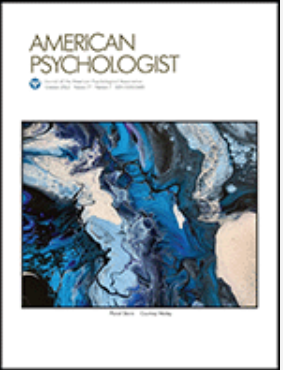How elections shape perceptions of ideal leadership.
IF 12.3
1区 心理学
Q1 PSYCHOLOGY, MULTIDISCIPLINARY
引用次数: 0
Abstract
Individuals hold internal leadership representations, termed leadership prototypes. We examined how these prototypes changed in reaction to the 2020 U.S. presidential election. A sample of Republicans (N = 200), Democrats (N = 200), and individuals who identified with neither major party (N = 200), surveyed eight times between October 2020 and January 2021, and reported their perceptions of the characteristics of the ideal leader. Results from a regression discontinuity in time and repeated measurement analyses found that the election altered two dimensions of the average U.S. leadership prototype. We specifically find participants' perceptions of Tyranny and Masculinity to decrease, that is, shifts to more Biden-like and less Trump-like leadership prototypes. Other dimensions of the leadership prototype remained stable, that is, charisma, sensitivity, dedication, intelligence, and dynamism. Analyses examined two boundary conditions of the effect: political identification and the acceptance of the election result as legitimate. Only perceived legitimacy was found to moderate the effect with the shift in leadership prototypes being driven by individuals who accepted the result of the election as legitimate. Our findings demonstrate the dynamic nature of leadership prototypes in response to real-world events and more broadly how an election can shape psychological perceptions. (PsycInfo Database Record (c) 2024 APA, all rights reserved).选举如何影响人们对理想领导的看法。
个人拥有内部领导力表征,称为领导力原型。我们研究了这些原型在 2020 年美国总统大选中的变化。在 2020 年 10 月至 2021 年 1 月期间,我们对共和党人(200 人)、民主党人(200 人)以及不属于任何大党的个人(200 人)进行了八次抽样调查,并报告了他们对理想领导者特征的看法。时间不连续回归和重复测量分析的结果发现,大选改变了美国平均领导力原型的两个维度。我们特别发现,参与者对 "暴政 "和 "男子气概 "的看法有所下降,即转向更像拜登和更不像特朗普的领导原型。领导力原型的其他维度保持稳定,即魅力、敏感性、奉献精神、智慧和活力。分析研究了该效应的两个边界条件:政治认同和对选举结果合法性的认可。结果发现,只有感知到的合法性能够调节这种效应,而领导力原型的转变是由接受选举结果为合法的个体所驱动的。我们的研究结果表明了领导力原型在应对现实世界事件时的动态性质,并更广泛地说明了选举是如何塑造心理认知的。(PsycInfo Database Record (c) 2024 APA, 版权所有)。
本文章由计算机程序翻译,如有差异,请以英文原文为准。
求助全文
约1分钟内获得全文
求助全文
来源期刊

American Psychologist
PSYCHOLOGY, MULTIDISCIPLINARY-
CiteScore
18.50
自引率
1.20%
发文量
145
期刊介绍:
Established in 1946, American Psychologist® is the flagship peer-reviewed scholarly journal of the American Psychological Association. It publishes high-impact papers of broad interest, including empirical reports, meta-analyses, and scholarly reviews, covering psychological science, practice, education, and policy. Articles often address issues of national and international significance within the field of psychology and its relationship to society. Published in an accessible style, contributions in American Psychologist are designed to be understood by both psychologists and the general public.
 求助内容:
求助内容: 应助结果提醒方式:
应助结果提醒方式:


